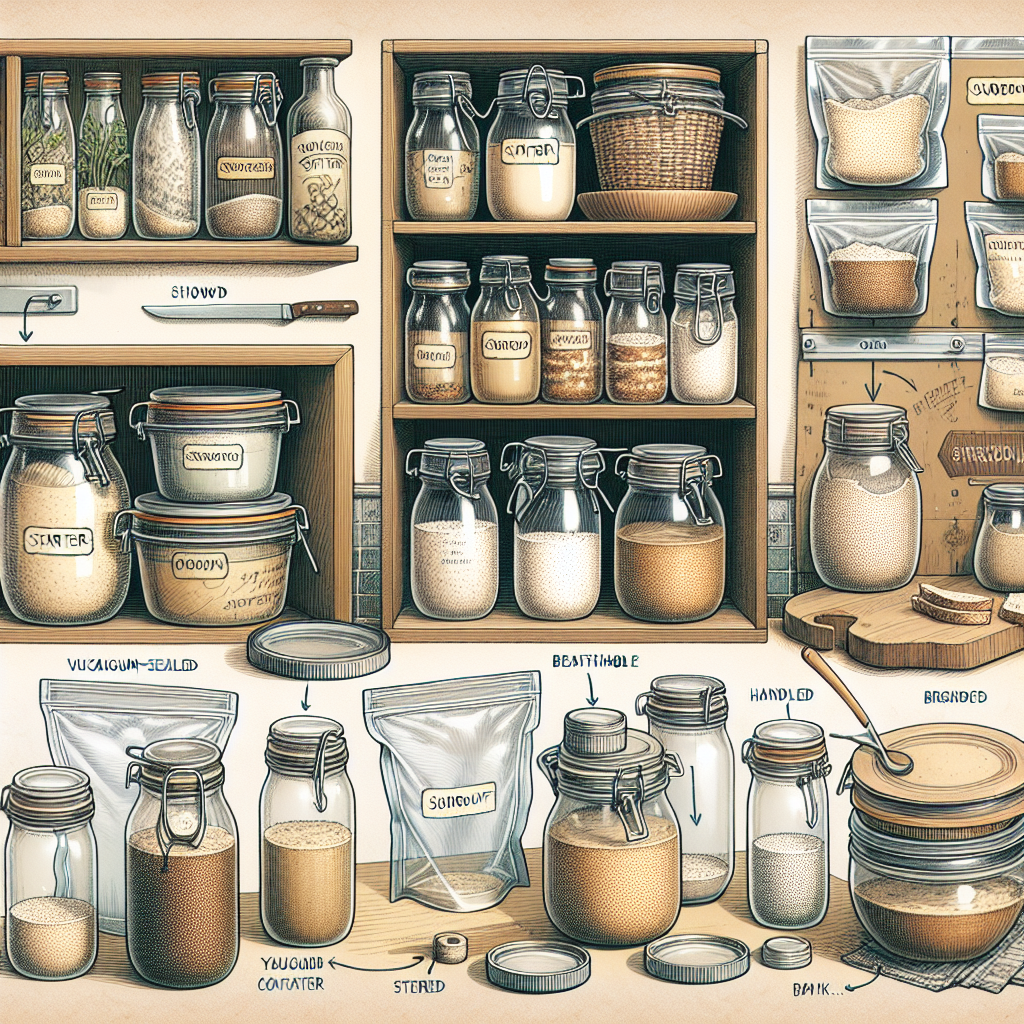===
Are you struggling to keep your sourdough starter alive and thriving? Many bakers face the frustration of watching their beloved starter lose its vigor, resulting in lackluster loaves that fail to rise. Understanding optimal storage solutions for your sourdough starter can make all the difference. In this article, we will explore advanced insights and effective techniques that will help you maintain your starter’s health, ensuring that it consistently yields delicious, airy bread.
Understanding the Importance of Proper Sourdough Storage
The longevity and performance of your sourdough starter hinge significantly on how you choose to store it. When not stored correctly, your starter may lose its potency, resulting in a less active culture that struggles to leaven your bread. This not only adds to your baking woes but can also lead to disappointing results in flavor and texture. Knowing how to store your starter can be the key to unlocking a world of sourdough possibilities.
Proper storage methods involve maintaining a balance of temperature, moisture, and feed frequency. Ideally, a cooler environment slows down fermentation, while a warmer one accelerates it. For most home bakers, keeping the starter in the refrigerator offers a reliable way to slow down activity while still providing vital microorganisms with an environment to thrive. This approach allows you to extend the time between feedings, as the yeast and bacteria will remain dormant.
Moreover, the container you choose for your starter plays a crucial role in its health. Glass jars, for instance, are non-reactive and allow you to monitor the fermentation process easily. Utilizing breathable lids or cloth covers ensures that your starter can exchange gases while preventing contamination. By paying attention to these seemingly minor details, you set the stage for a robust and lively sourdough culture that will consistently elevate your baking.
Best Practices for Maintaining Your Sourdough Starter
To keep your sourdough starter in peak condition, it’s essential to establish a routine that includes regular feedings and monitoring. Feed your starter at least once a week if stored in the refrigerator. The feeding process involves discarding a portion of the starter and adding equal parts flour and water by weight. This not only strengthens the microbial activity but also helps maintain the right balance of acidity, which is key for flavor development.
When working with your starter, always use filtered or dechlorinated water. Chlorine and other chemicals often found in tap water can inhibit yeast propagation and alter the starter’s flavor profile. Additionally, consider using a blend of flours for feeding—whole wheat or rye flour can introduce new microorganisms to the culture, enhancing its complexity and aroma. Combining different flours can be an under-the-radar technique for elevating your sourdough game.
Another crucial aspect is to observe your starter for visual and olfactory cues. A healthy starter should exhibit a pleasing aroma and bubbly texture. If you notice any off-putting smells or signs of mold, it’s essential to take action immediately. This could involve discarding the affected portion and starting afresh or, in some cases, adjusting your feeding rituals. These insider tricks will ensure you maintain a resilient starter that’s always ready for your next baking adventure.
===
In summary, mastering optimal storage solutions for your sourdough starter is a game-changer for any baking enthusiast. By understanding the importance of proper storage and implementing best practices, you can keep your starter lively and flavorful for generations to come. Don’t let the struggle of maintaining your culture hinder your passion for baking; instead, embrace these insights and transform your approach. Ready to elevate your sourdough skills? Dive into your kitchen armed with this knowledge, and watch as you create breathtaking loaves that impress family and friends alike. Happy baking!
Managing Degenerative Disc Disease: The Role of YogaSubmitting Your Web Wrapped Curio: A Step-by-Step GuideStrategic Hiding Spots in Life is Strange Pool SceneRelevant LinkRelevant LinkRelevant Link
